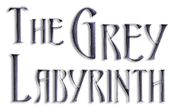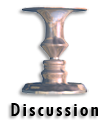|
||
Crayon ArtWell, first, the little story I wrote doesn't really have much to do with the solution. However, it does appear to have a couple of hints in there, left by me unintentionally. Most of the people that looked at this puzzle focused on figuring out what was going on in the lower right. While this is certainly of interest, this is not the most helpful part. So what is it? At first glance, it looks like a family tree, with blue representing male, and red representing female. But what about the other colours? The biggest hint is simply the fact that this is the Grey Labyrinth. The grey circle in the diagram is what this puzzle is based on; it represents the Minotaur. Once that is known, the other circles can be deciphered. Yellow represents Greek gods, while Brown represents the bull. The rest of the circles are humans in the Minotaurs immediate family. From top to bottom and left to right, the circles represent: The confusing bit in the lower right? Theseus, who slayed the Minotaur, ran off with Ariadne (the Minotaur's half-sister), but then left her. He married and had a son. His wife died (or he left her), and he then married Ariadne's sister, Phaedra. While Theseus was away, Phaedra fell in love with Hippolytus, but was rejected (the green X). She accused him of raping her, and later killed herself. References: Phaedra Synopsis, Classical Mythology Online - Character Glossary (Minos, Family Tree 23) |
||
|
Copyright © 1996-2026 Wx3, All Rights Reserved.
|





